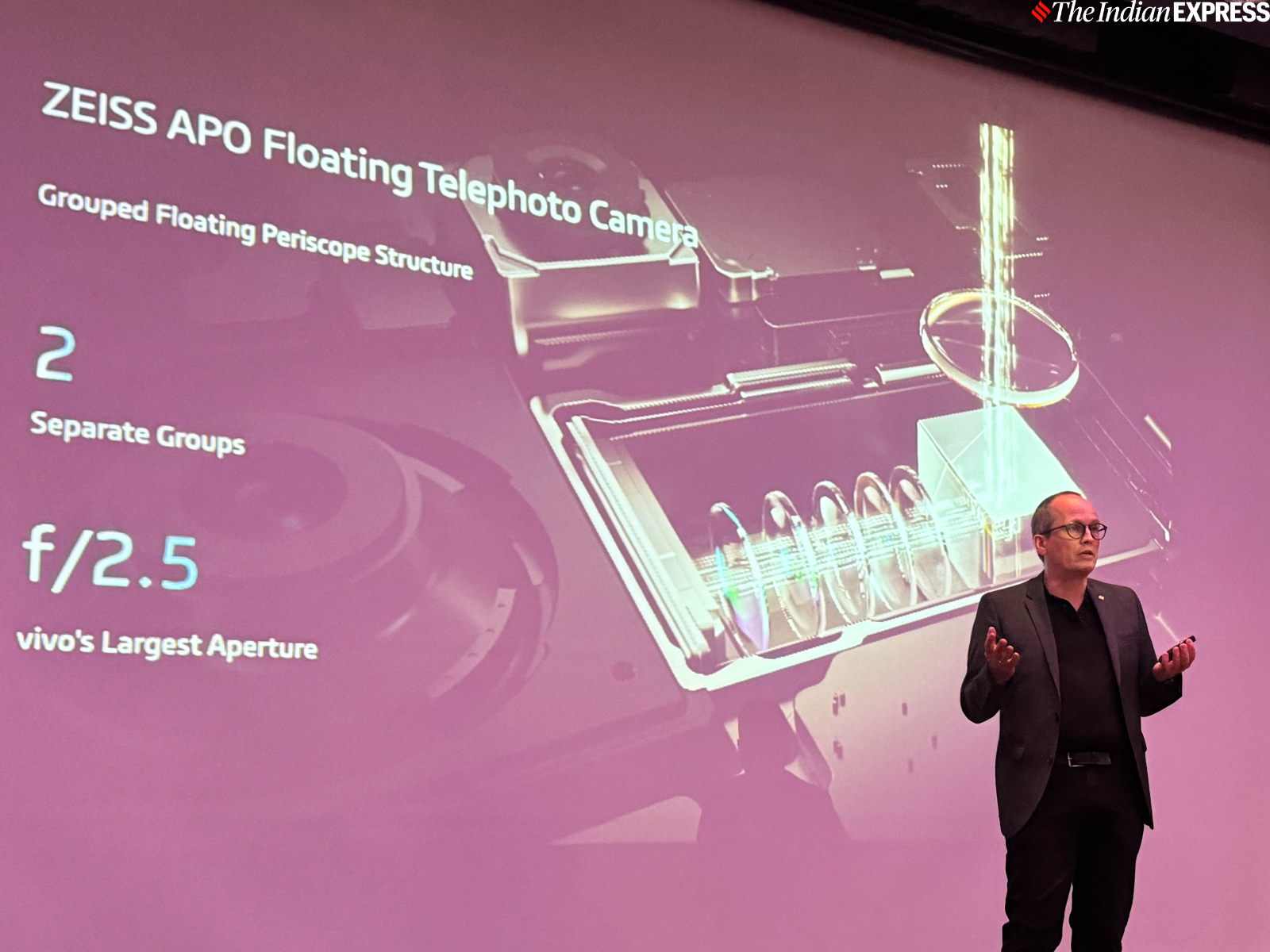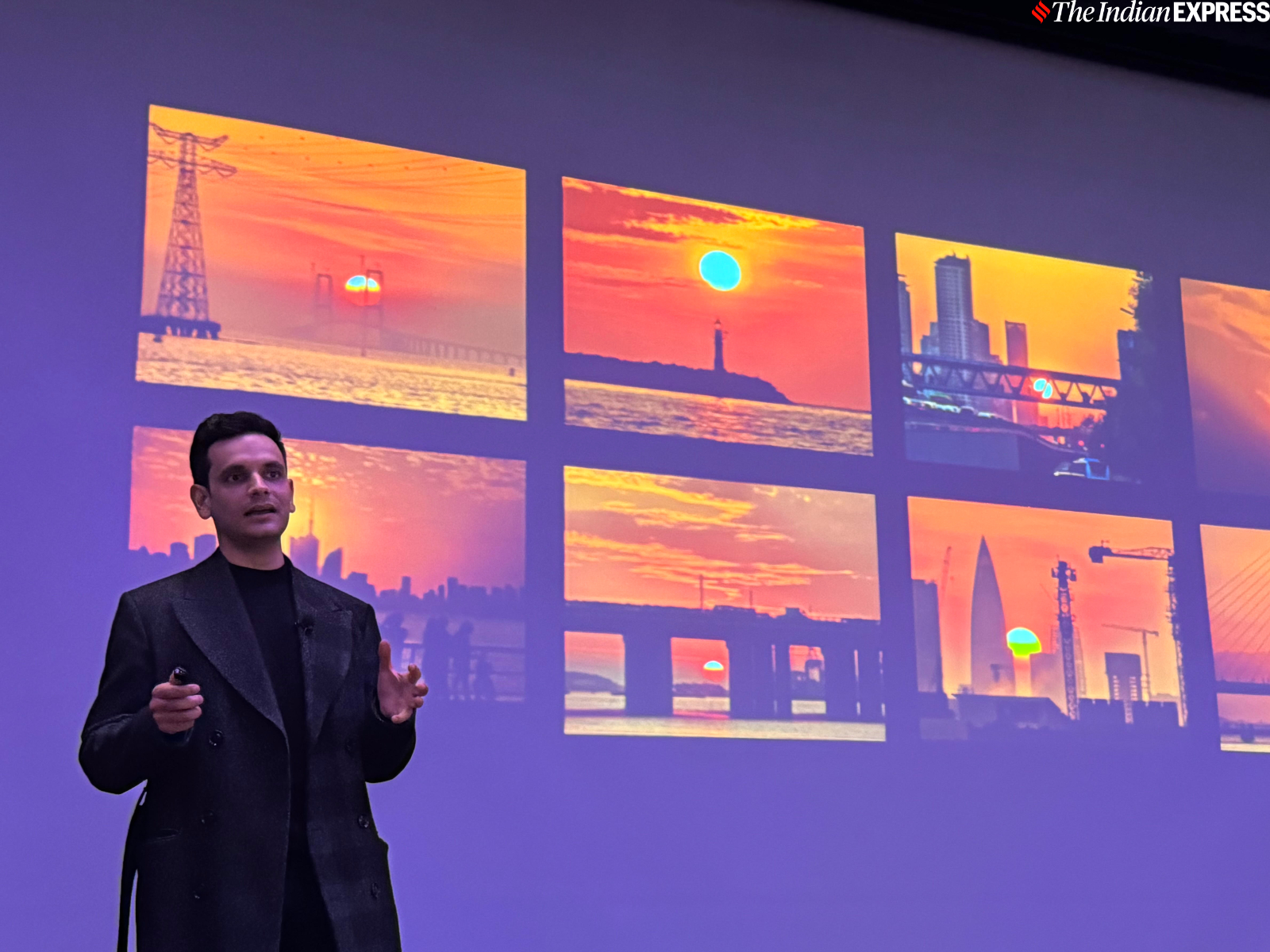“It’s hard to compare these devices, and they are not competitors… if you are an ambitious photographer, you will most likely have both. If you’re a normal consumer, or even a demanding amateur photographer, you will most likely have just one camera or smartphone camera system.” Oliver Schindelbeck, Senior Smartphone Technology Manager at Zeiss Consumer Products, explains why the conversation about whether a DSLR or smartphone camera is better than the other is not important anymore.
“We are not chasing the DSLR camera anymore. These are two very different categories of cameras, and in some aspects, we have surpassed traditional cameras with smartphones, especially in the fields of computation power and imaging,” Schindelbeck tells indianexpress.com in a recent interview on the sidelines of the pre-launch of the Vivo X100 Pro in Hong Kong.

Schindelbeck says the combination of ISP and AI and how they are integrated is vastly different from how smartphone cameras were designed in phones once. “If you just look at the hardware side, it’s not that much different,” he says. “The concept is pretty much the same. You have a stack of lens elements and the sensor on the back for conventional ones, and in recent years, periscopic camera systems have emerged. The technology is the same, but it’s even more sophisticated. It has grown from four to five lens elements, and now we have seven to eight lens elements. We use a combination of plastic and glass, and we optimise it more, as well as making improvements on the sensor side.”
The X100 Pro, the flagship device in Vivo’s X100 series, comes with a 50-megapixel Periscope zoom lens and Zeiss’ APO “floating design” with new Vario-Apo-Sonnar elements. Simply put, it means the lens can shift forward and backward to focus on subjects at various distances. The phone’s camera also sports a fast f/2.5 aperture and a large 1/2-inch sensor. Vivo says its X100 Pro is designed for portrait photography.

Designing a camera system for a modern smartphone is not only complicated but also a long process, spanning generations before the technology is mature enough to be introduced to a phone. “We need to find out what the next thing is that we need to optimise or introduce, and once we have found out in which field we need to develop, it then comes to the engineering departments to translate these needs into specifications and then develop the camera system accordingly,” explains Schindelbeck.
Schindelbeck cites the example of a new Telephoto Sunshot mode, which allows you to take photos of the sun without blowing out the environment and the rest of the sky. To create a sun mode, Vivo needed a camera module that provided this level of telephoto capability. “I would say six to 12 months of pure development time went in until such a camera module was ready for mass production,” reveals Schindelbeck.
“It’s a long process,” Keshav Chugh, Product Manager – Camera R&D, Vivo India, chimes in. “We work with Zeiss to design the hardware and the module, and simultaneously we work on the ISP and algorithms, tuning the camera’s overall scene detection HDR, and then it all comes together.”
“If you want to take a telephoto Sunshot with a professional camera, you incline towards a mirrorless camera. If you want to take a picture at 10x, the size and cost of a 250 mm professional camera lens, which is running at a f/2.5 aperture, is in the tens and thousands of dollars,” he said.
“We want to bring that telephoto sunshot feature to everyday users through a combination of hardware and software. Sunset is such a common theme – sunrise and sunset, and smartphones have not been able to capture it. It was a pain point, and we thought about how to solve it,” Chugh continues.
The Vivo X100 Pro’s camera is covered with Zeiss T* Coating, an advanced anti-reflective coating technology that significantly increases light transmittance and reduces light reflection in pictures. There is also Multifocal Professional Photography mode, which allows users to take “professional portraits” with focal lengths up to 100mm, as well as a new Zeiss B-speed style bokeh.
“It’s difficult to find out what customers need because no one knows these. Sometimes the needs are well known, but the technology is not mature enough. I think the telephoto Sunshot falls in the second category,” Schindelbeck adds.

Both Schindelbeck and Chugh agree that consumers want professional image quality, and the nature of the device, whether a mirrorless camera or a smartphone, in this case, is inconsequential. However, they will most likely use a device that is available at that moment.
“For the portrait package, we have five focal lengths on the Vivo X100 Pro. If you were to do this on a DSLR or a mirrorless camera, you would be carrying five lenses, plus a camera body, batteries, and a charger. But if you have all of that in just your pocket, then the level of convenience is hard to beat,” says Chugh.
One of the most polarising debates in the smartphone world has been the megapixel wars that were ignited back in the early 2010s and reignited again in 2018 when the first smartphone with a 48MP camera was launched. That’s not the subject Vivo believes is important anymore, neither to consumers nor the brand. “It doesn’t matter anymore. The pictures speak for themselves. I can have a 50MP main camera on my flagship phone, but how will you tell the difference if a phone costing Rs 10,000 also has a 50MP camera?” Chugh puts an end to this debate by saying that Vivo is out of the “quantitative” game. Instead, it would rather be in the “qualitative” game.
© IE Online Media Services Pvt Ltd
First uploaded on: 04-01-2024 at 12:32 IST








